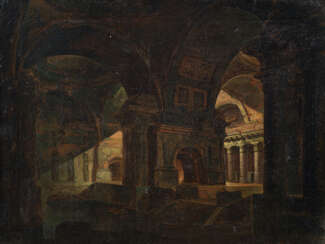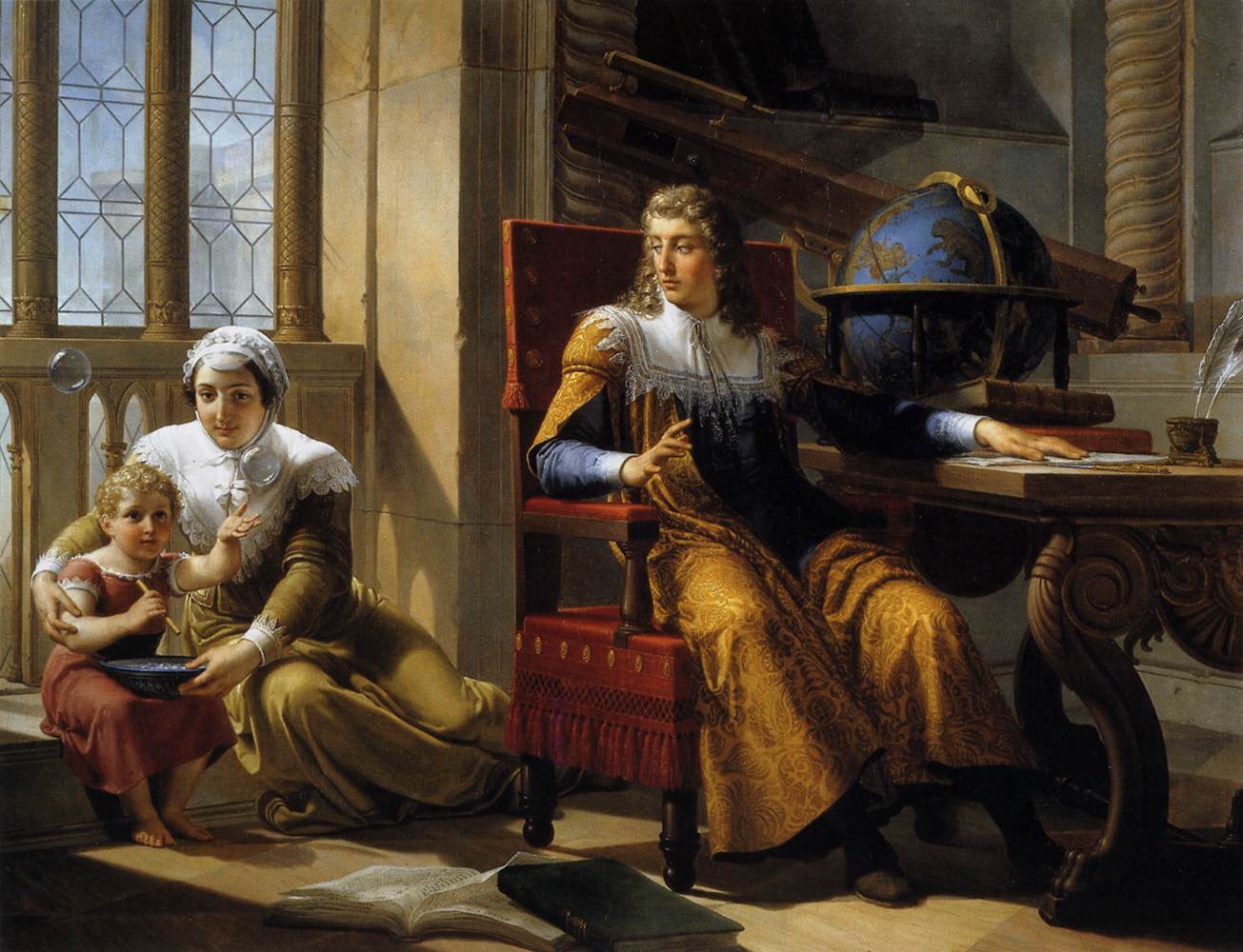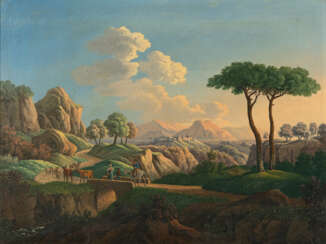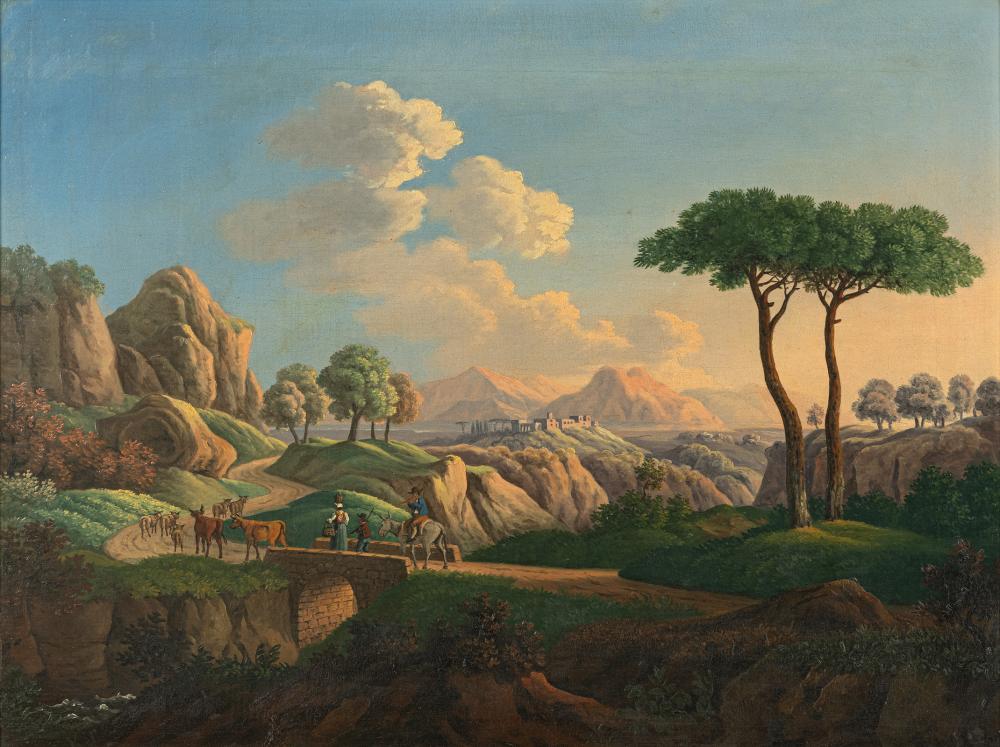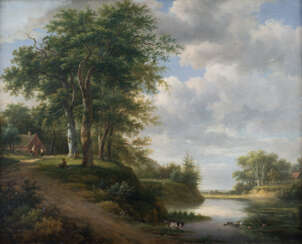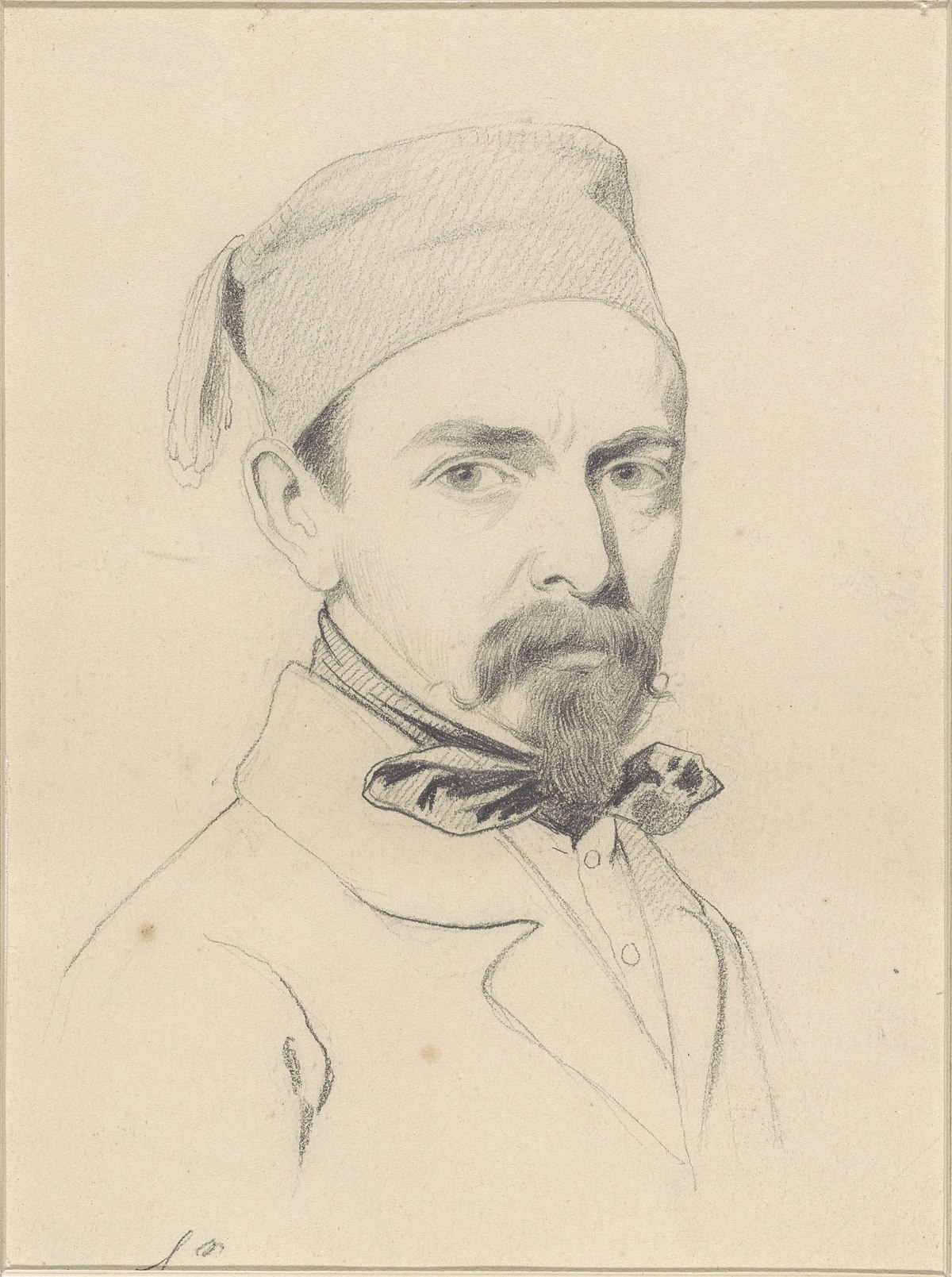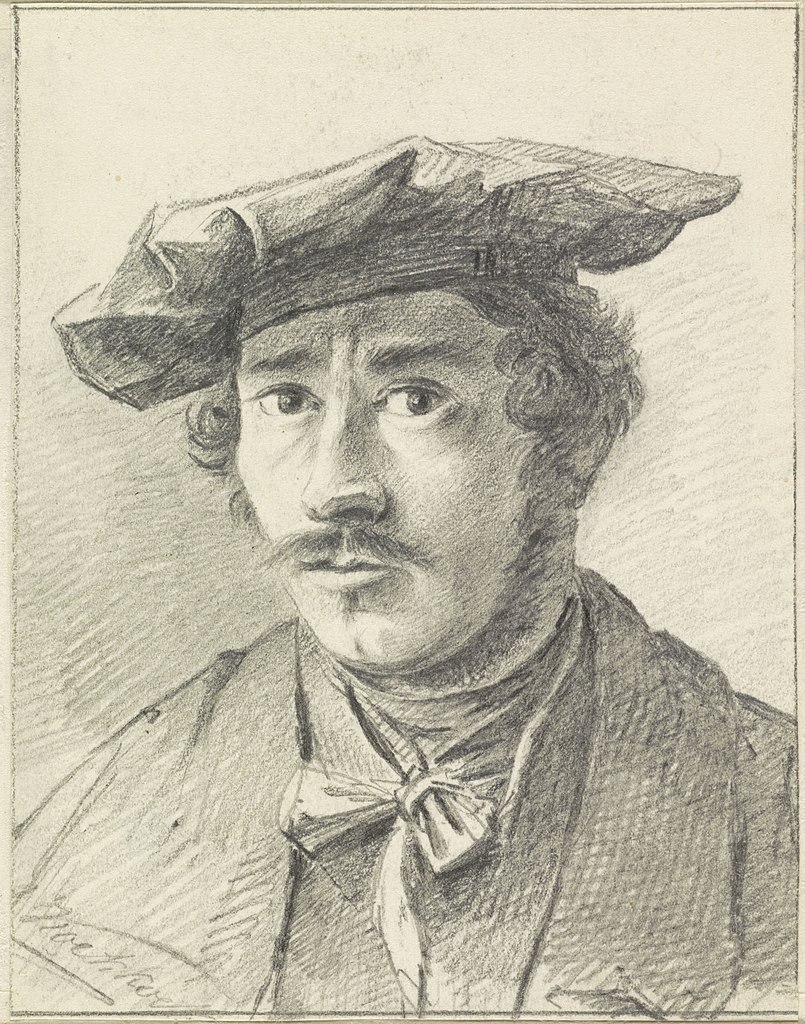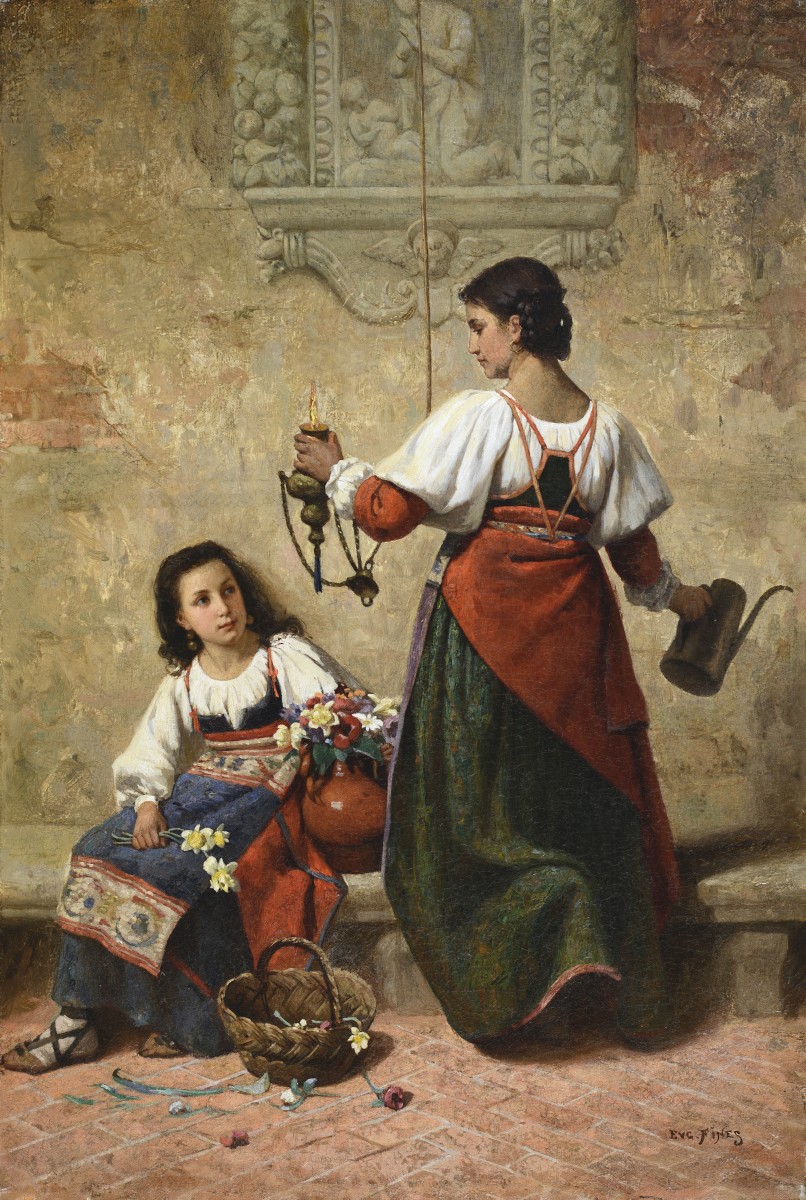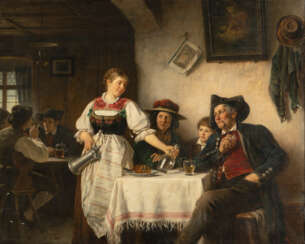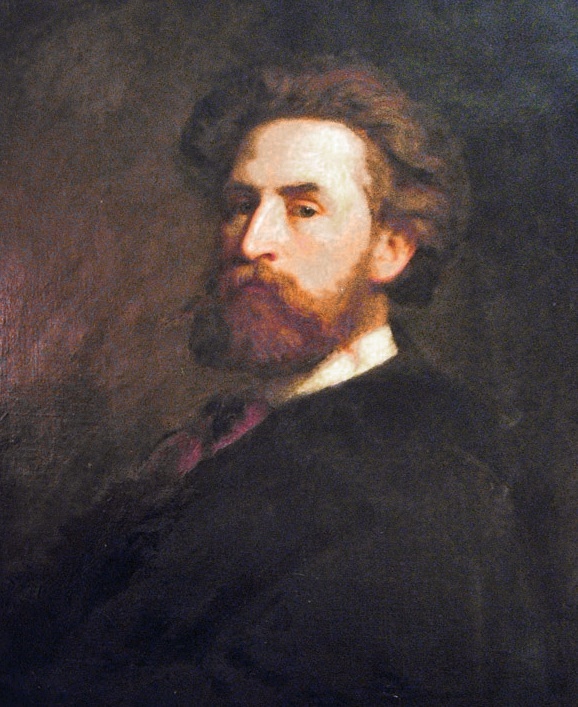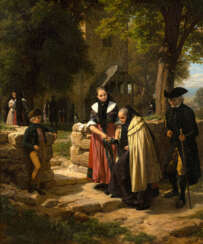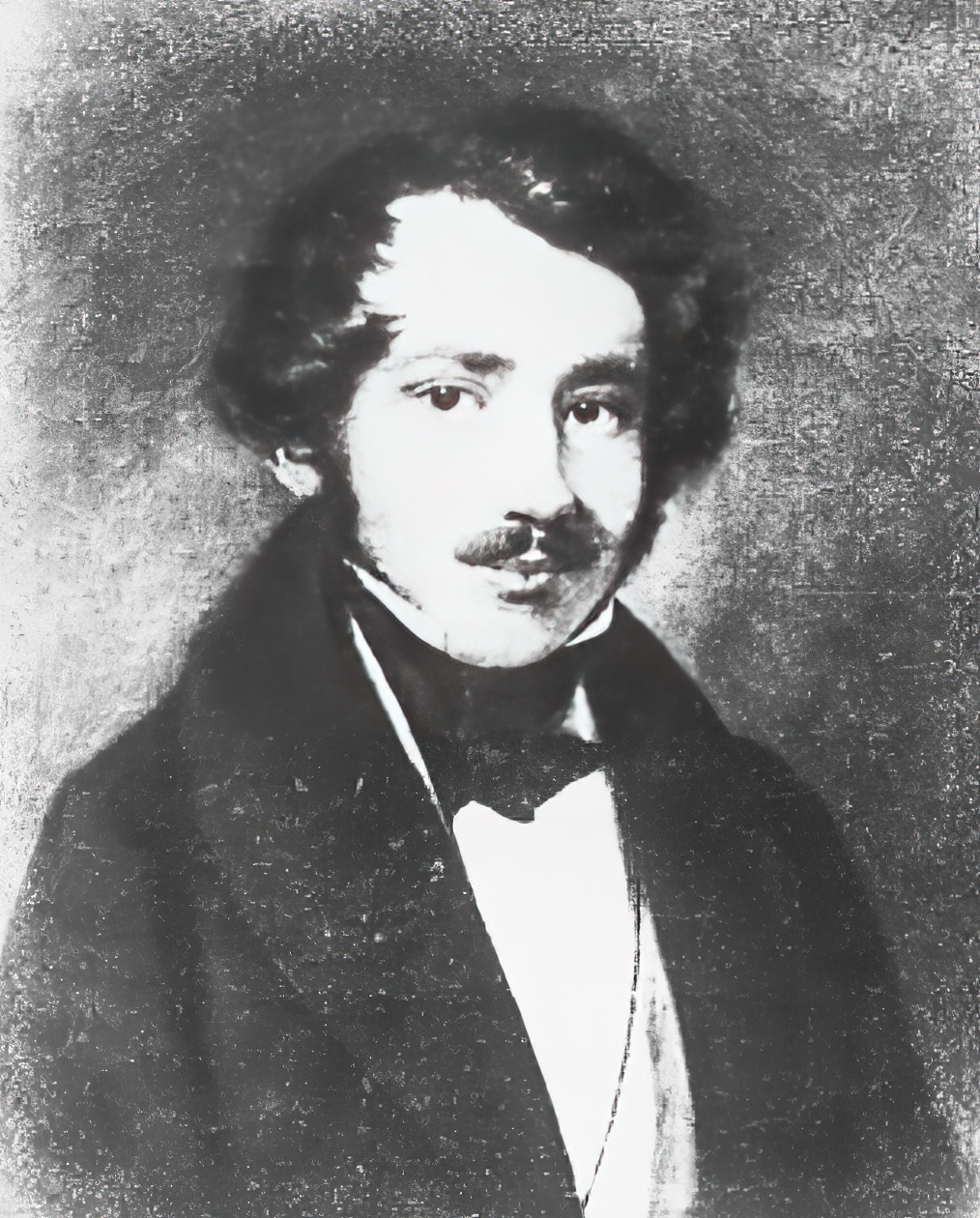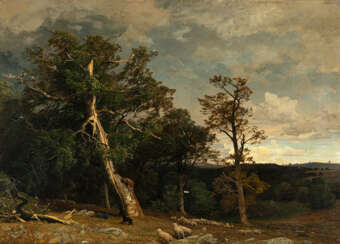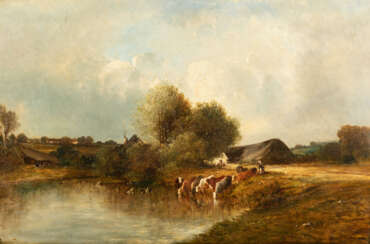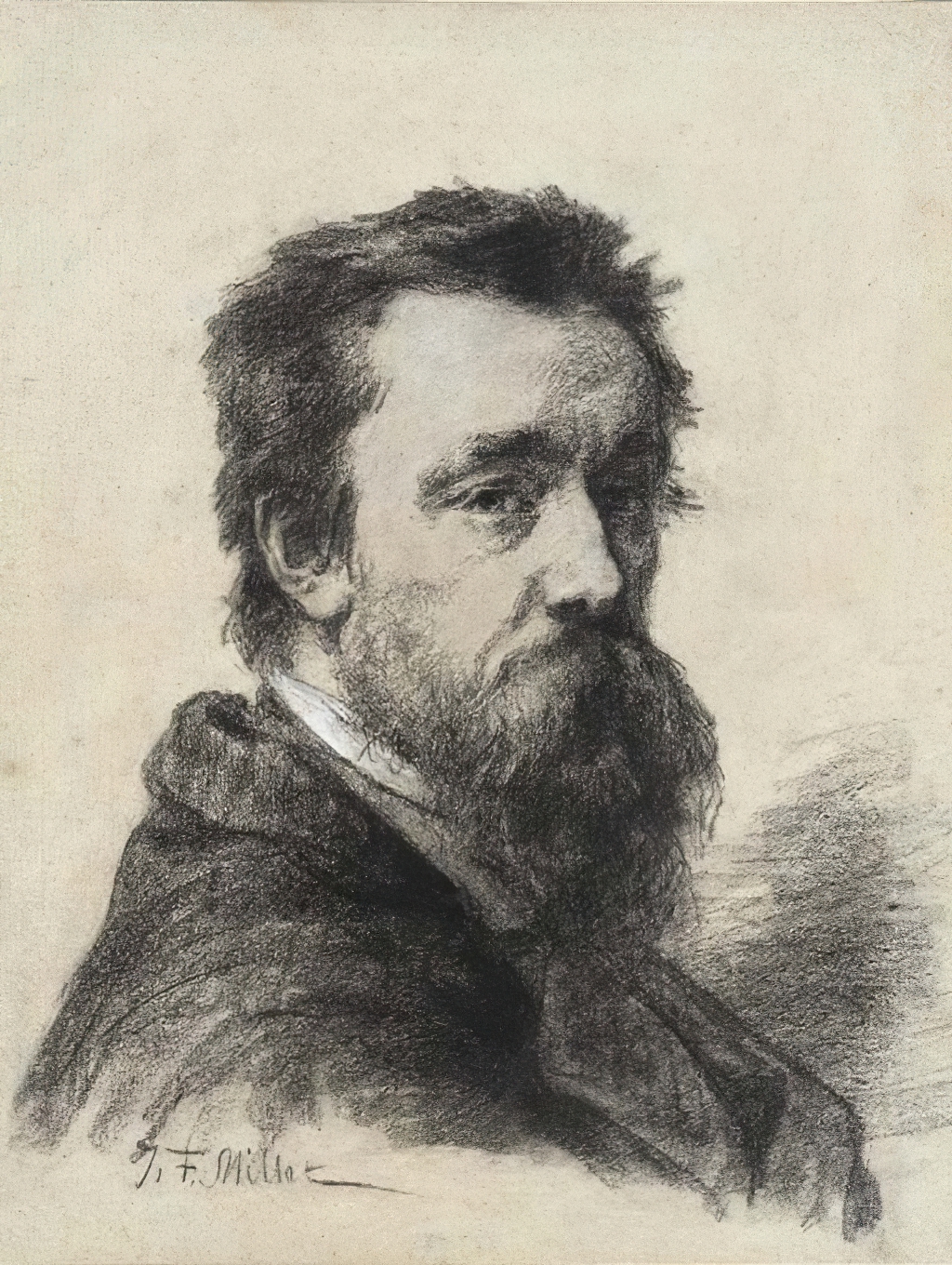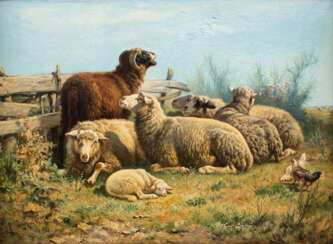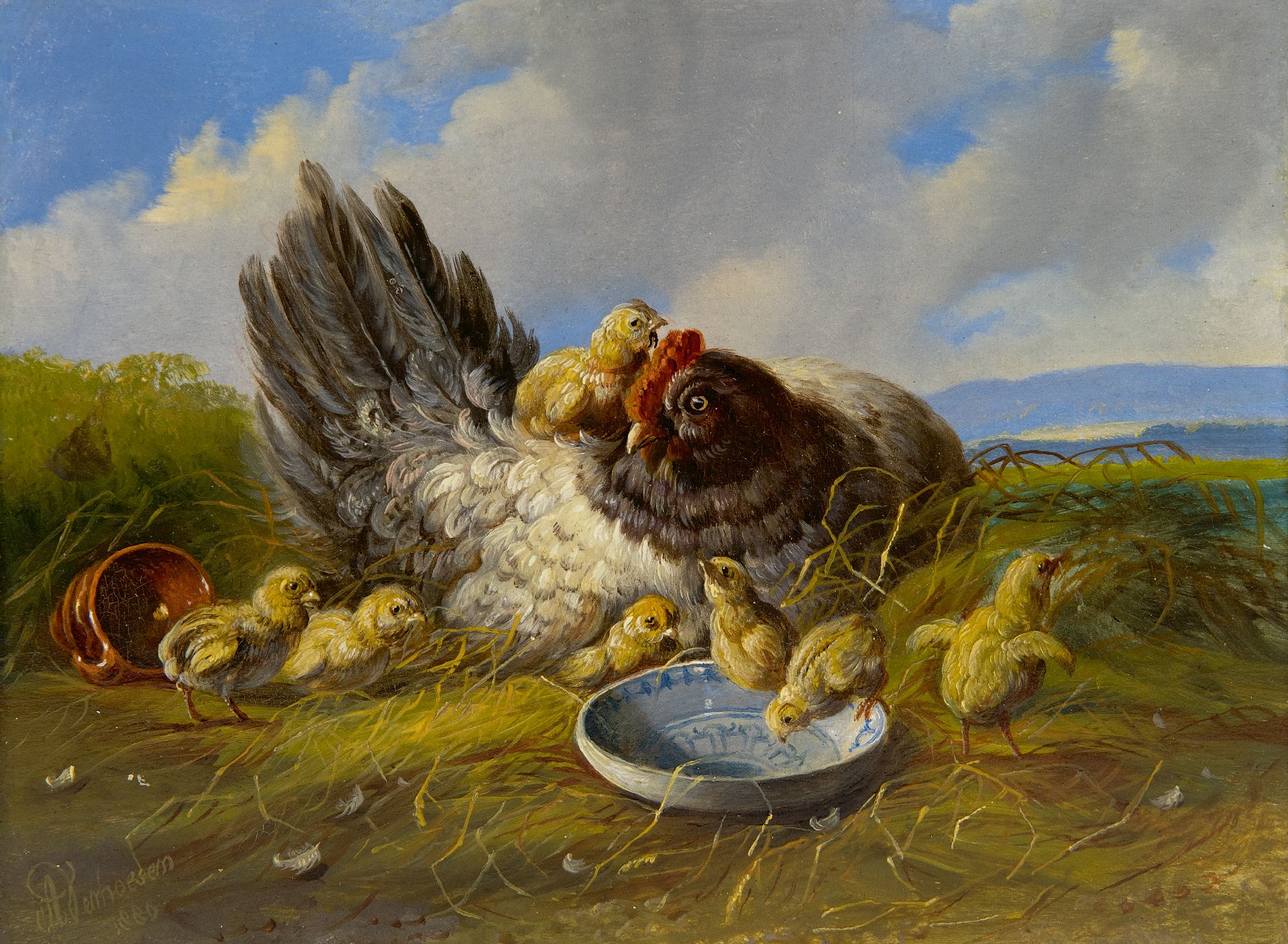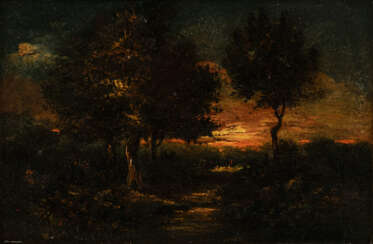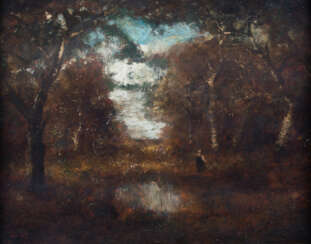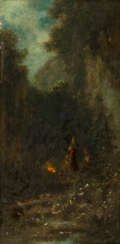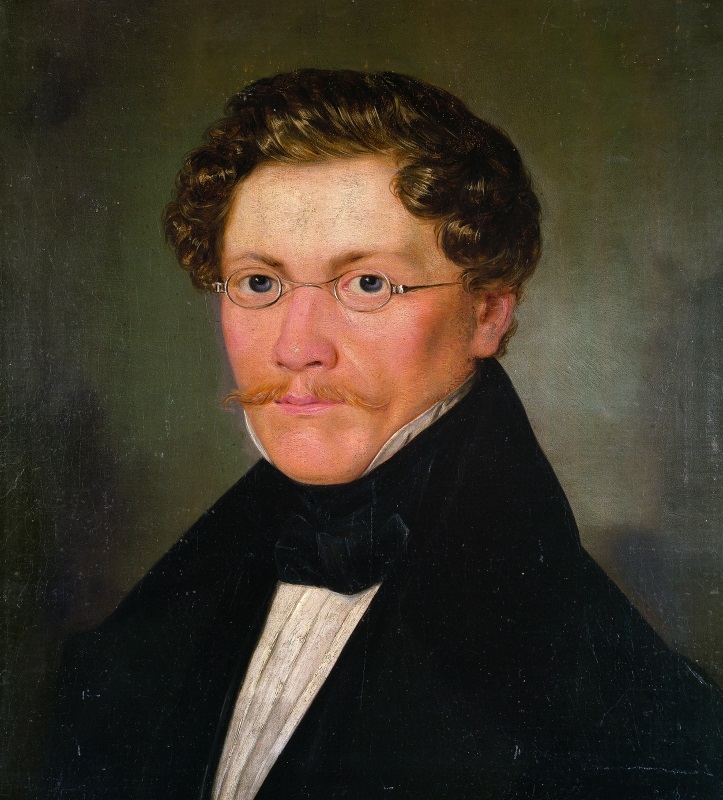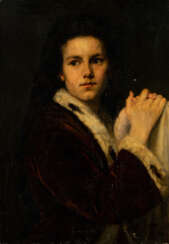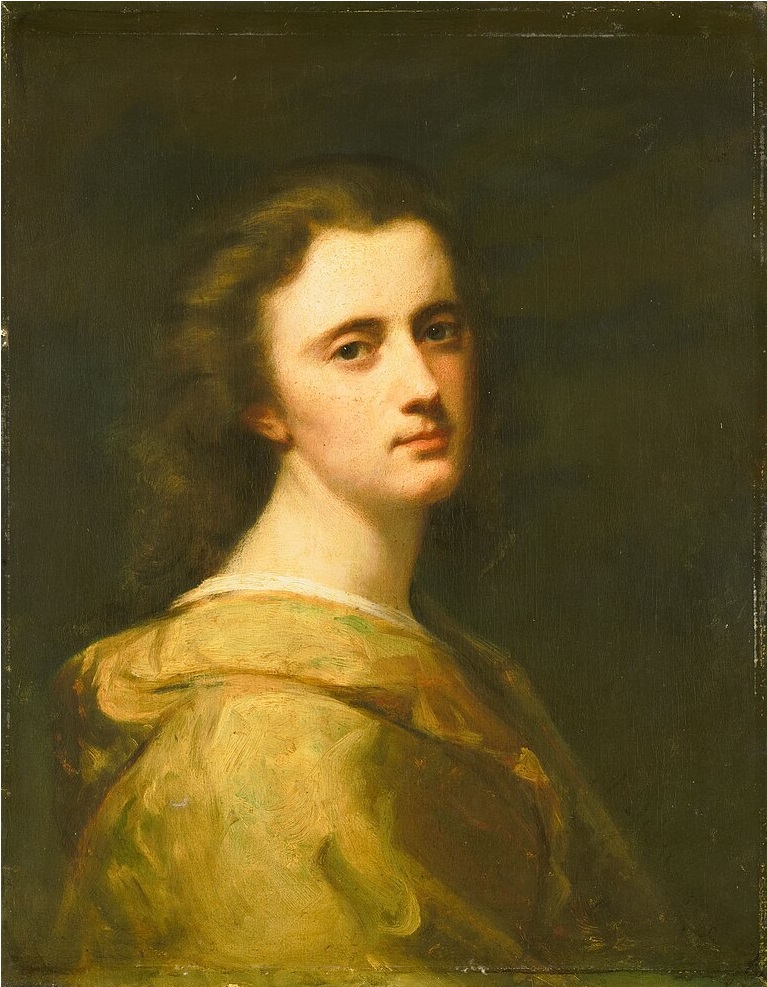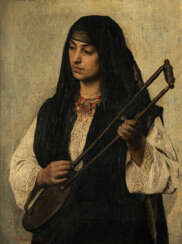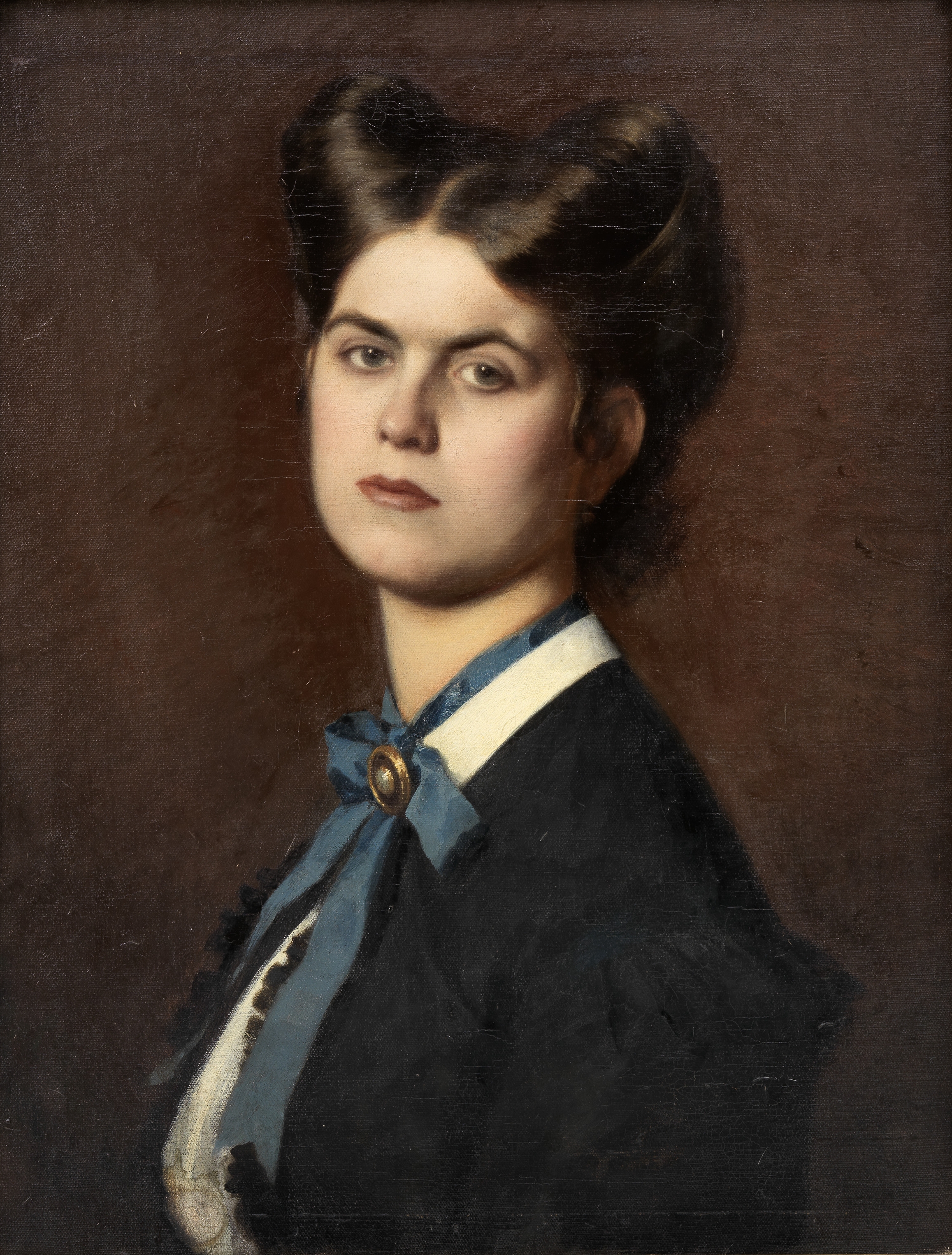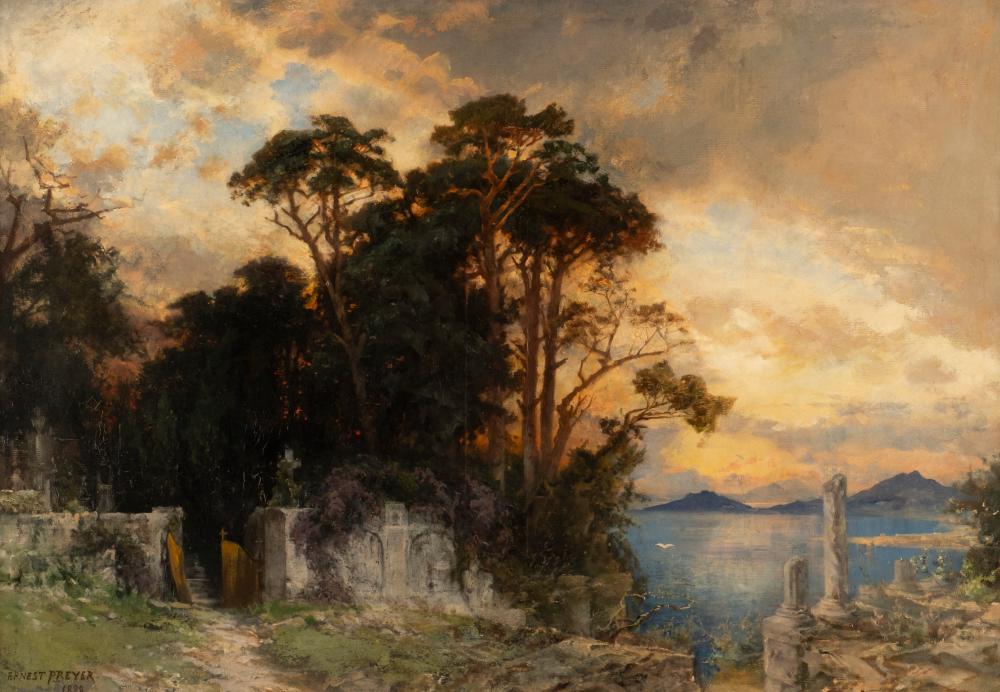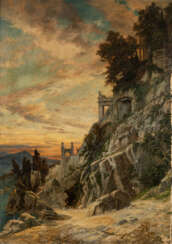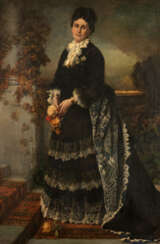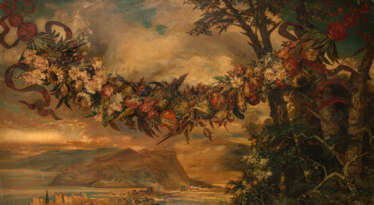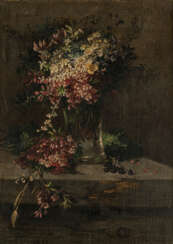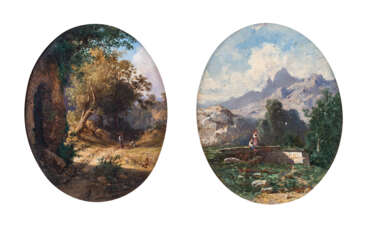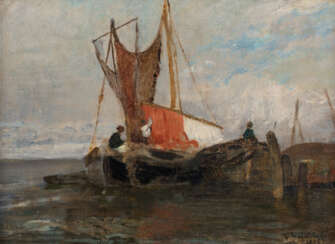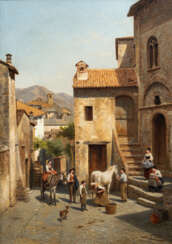
Paintings — 790 | Old art, antiques & jewelry
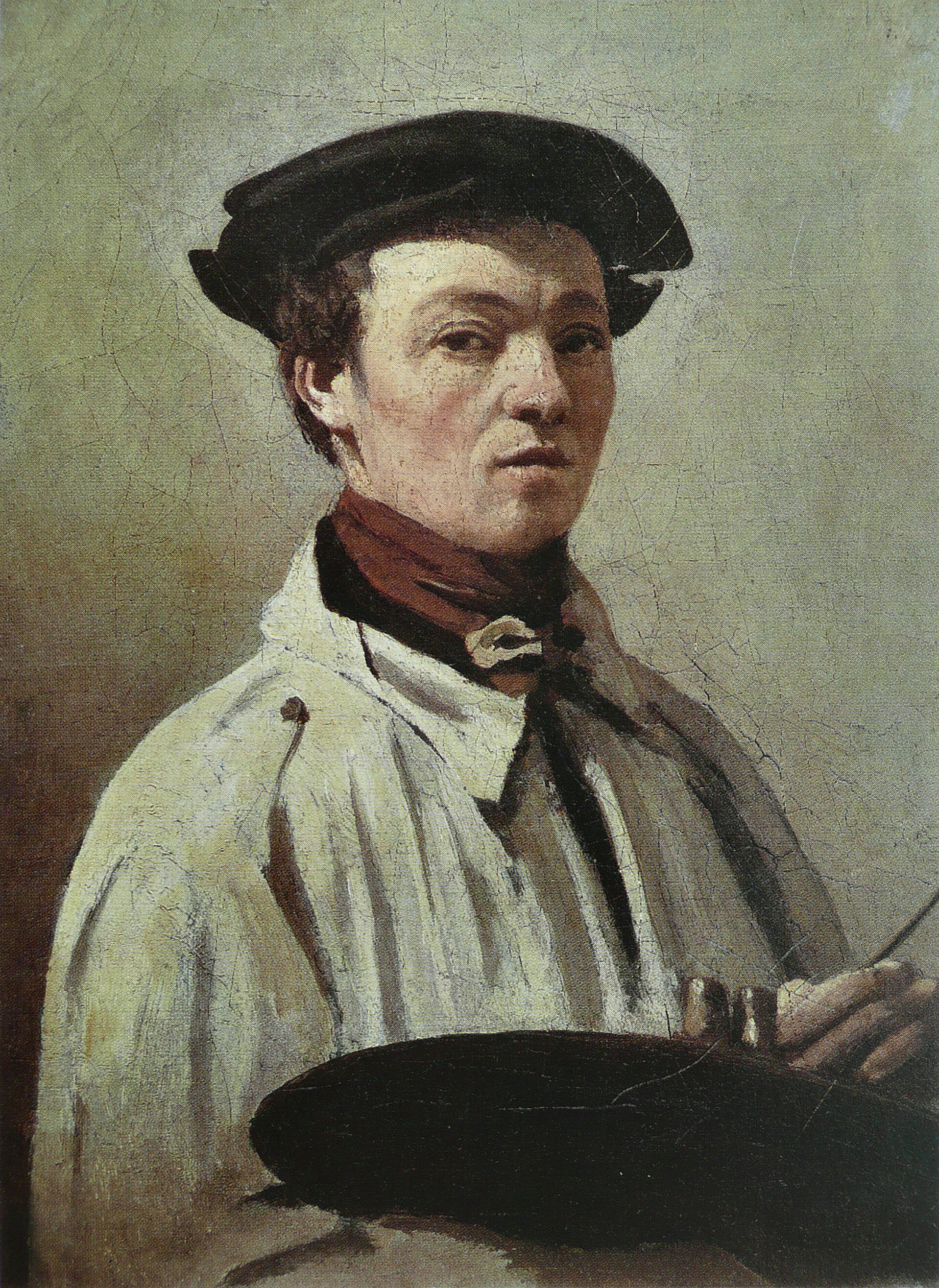
Jean-Baptiste-Camille Corot was a French landscape and portrait painter as well as a printmaker in etching. He is a pivotal figure in landscape painting and his vast output simultaneously referenced the Neo-Classical tradition and anticipated the plein-air innovations of Impressionism.
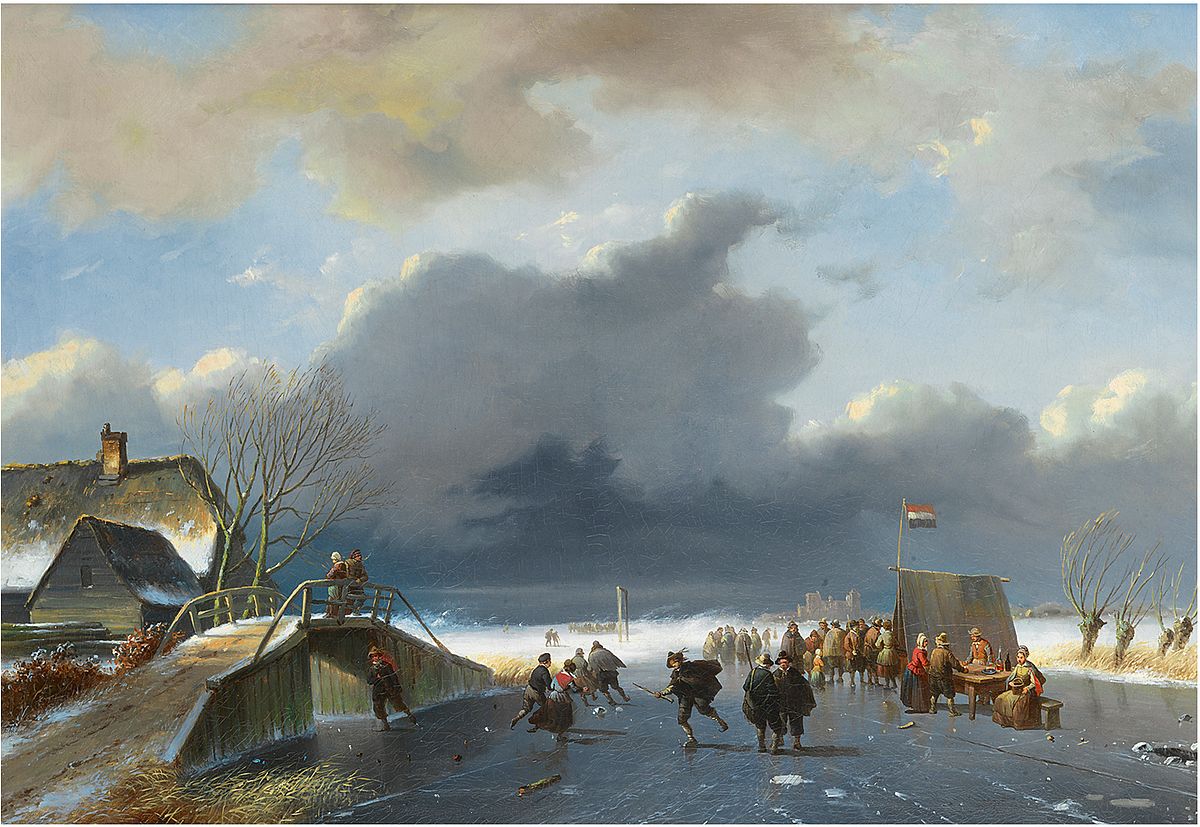
Nicolaas Johannes Roosenboom was a Dutch painter, etcher, lithographer, watercolorist, and illustrator who was specialised in landscape art. He painted various types of landscapes but was mainly known for his winter landscapes. Roosenboom's work is situated in the Dutch Romantic movement. He collaborated with various artists who painted the staffage in his landscapes.
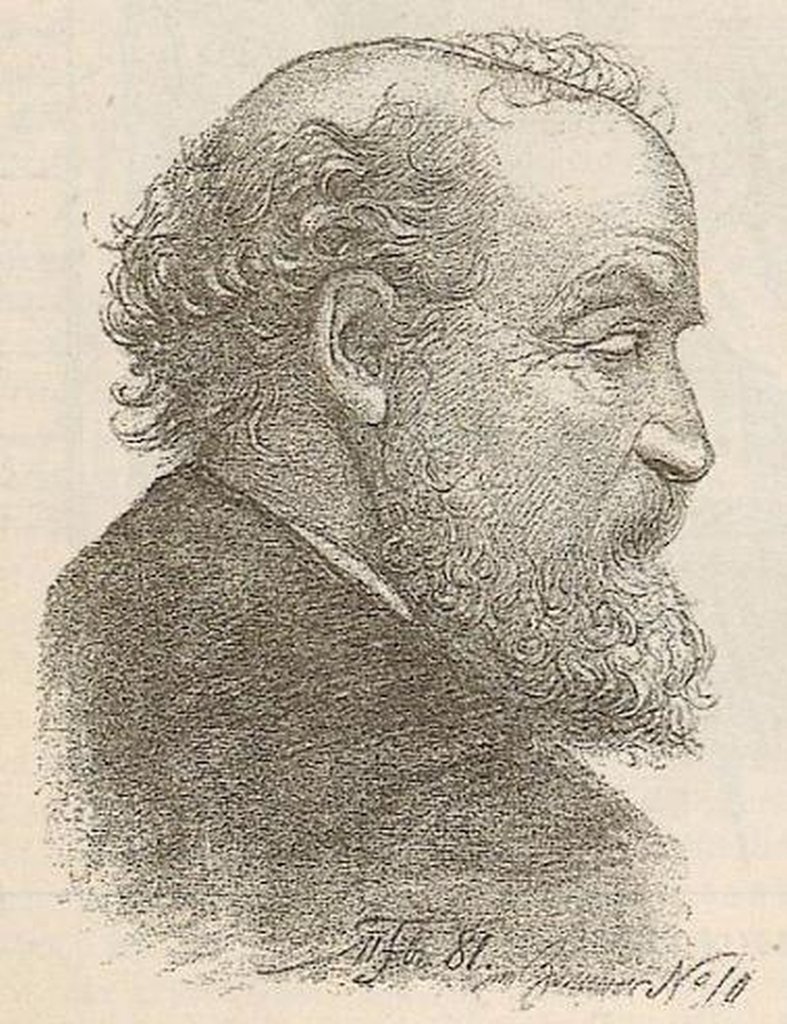
Johann Georg Valentin Ruths was a German painter of the second half of the nineteenth and early twentieth centuries. He is known as a landscape painter.
Ruths painted a variety of natural landscapes, including forests, mountains, plains, desert places and villages. He most often depicted the lower Elbe River, as well as Italian and Swiss vistas. His paintings, imbued with an elegiac mood, are still popular in Germany and are common in galleries and private collections. Some of his famous works are "Evening in the Sabine Mountains", "North German Oak Tree", "The Grave of a Rich Man on the Baltic Coast", "The First Spring Day", "Misty Morning in the Forest" and others.
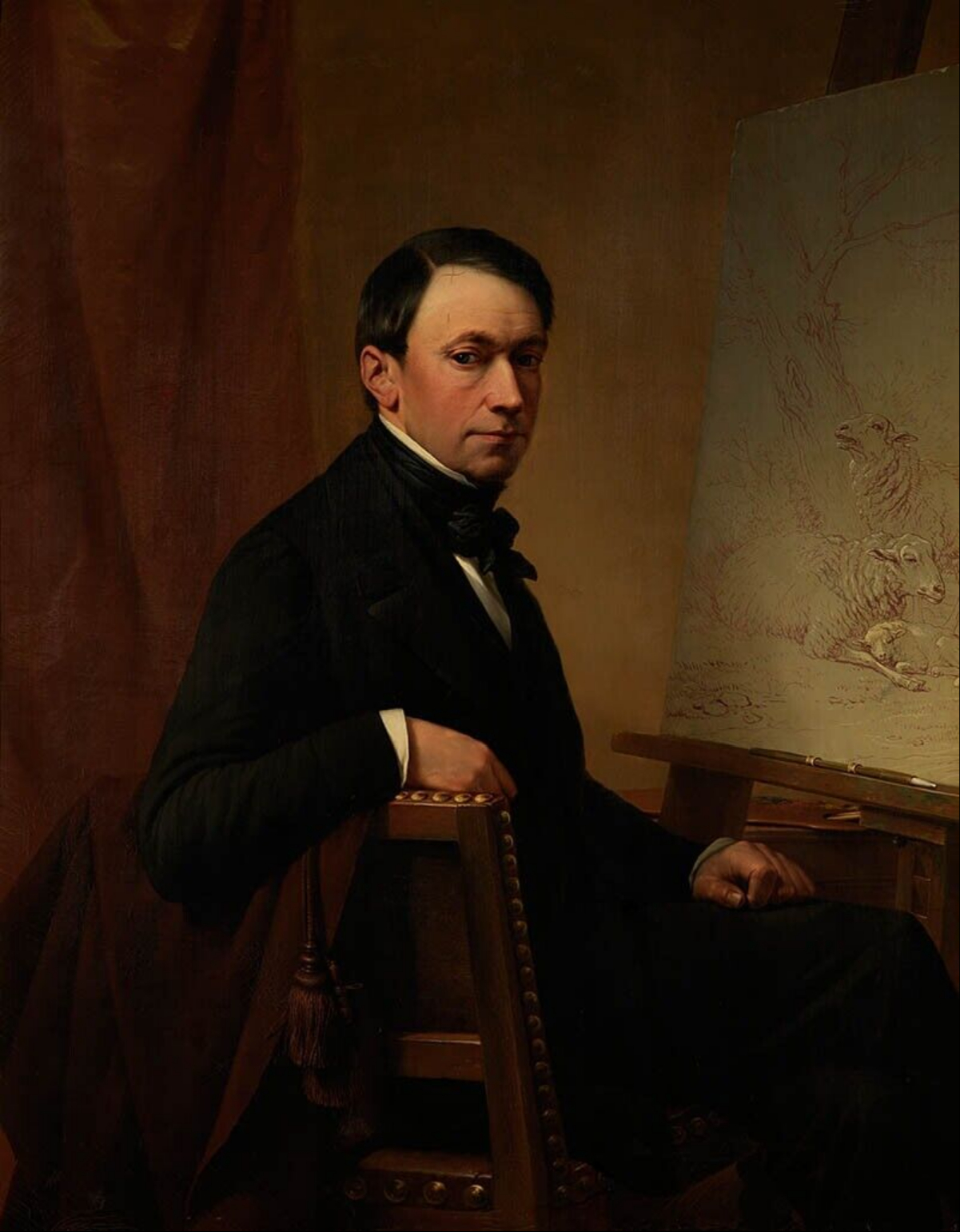
Eugène Joseph Verboeckhoven a Belgian painter, was born at Warneton in West Flanders. He was a painter, a sculptor, an etcher, an engraver, and a lithographer of animals, animated landscapes, and portraits.
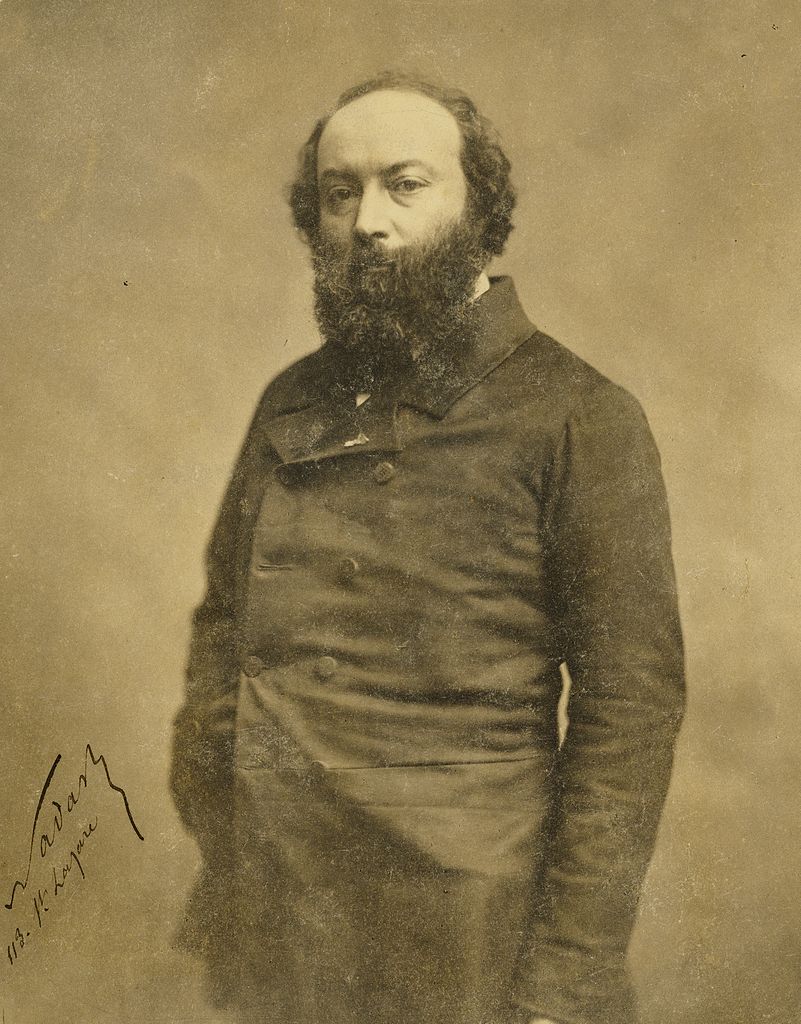
Théodore Rousseau was a prominent French painter, celebrated for his pioneering contributions to the Barbizon school of landscape art. His dedication to capturing nature's essence made him a pivotal figure in landscape painting's evolution. Rousseau's technique involved painting directly from nature, a method that infused his works with a profound sense of realism and vitality. This approach was notably evident in his masterpiece "An Avenue of Trees, Forest of l'Isle-Adam," where he meticulously captured a scene entirely outdoors, a testament to his commitment to authenticity and detail.
Théodore Rousseau's artistry wasn't confined to painting alone; his drawings, like the detailed "Study of an Oak Tree," demonstrate his versatility and deep connection with nature. His works received significant recognition, culminating in a triumphant display at the Universal Exposition of 1855. However, his life was not devoid of challenges. Personal tragedies and professional setbacks marked his later years, yet his resolve and dedication to art remained unshaken.
For art enthusiasts and collectors, Théodore Rousseau's works are pivotal, not just for their beauty but also for their role in the history of landscape painting. His pieces like "The Great Oaks of Old Bas-Bréau" are cherished in collections worldwide, serving as enduring symbols of his talent and his profound influence on subsequent art movements.
For those interested in the intersection of nature and art, subscribing to updates on Théodore Rousseau can provide invaluable insights into his life's work, his contributions to the Barbizon school, and his lasting impact on the world of art. Stay informed about new discoveries, sales, and auction events related to Rousseau's oeuvre to deepen your appreciation and understanding of this illustrious artist's legacy.
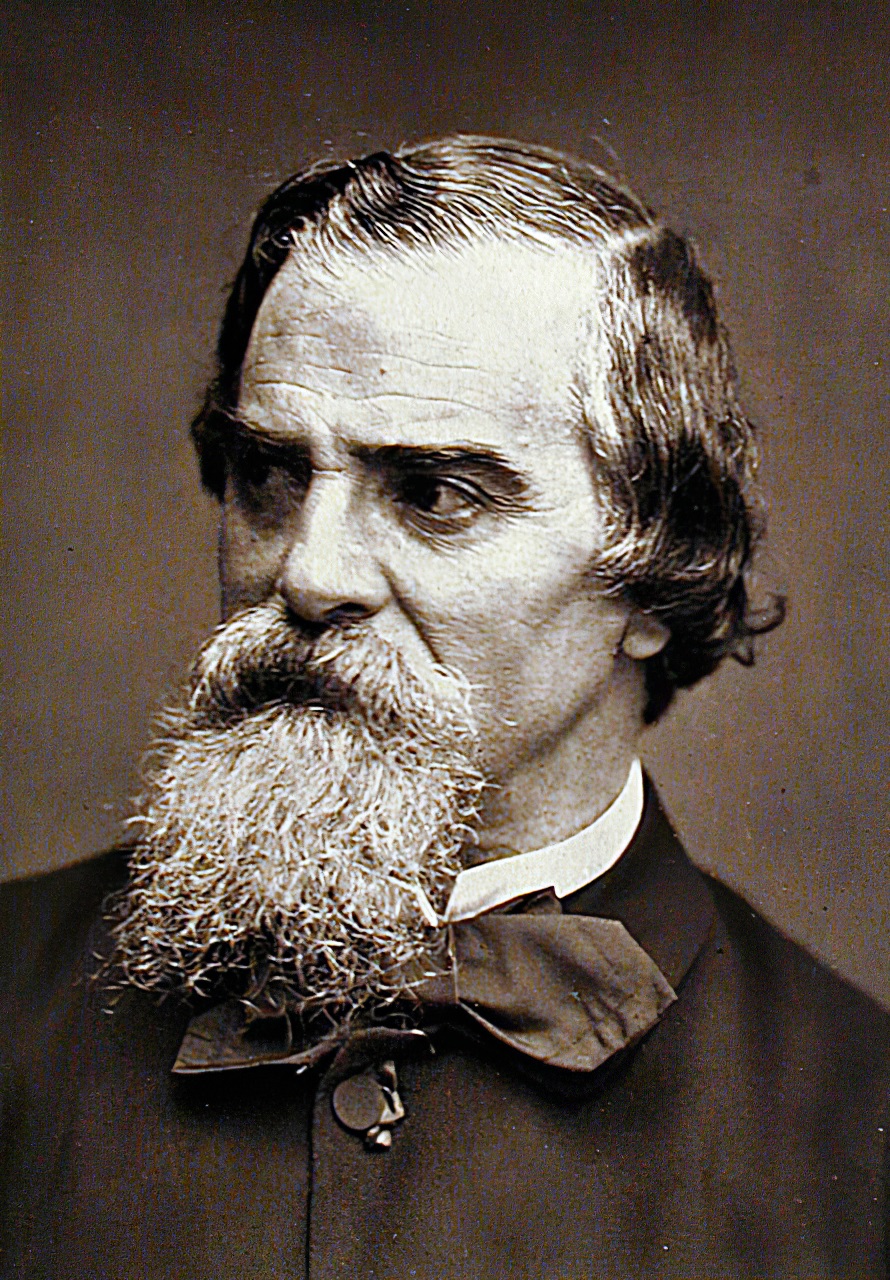
Narcisse Virgilio Díaz de la Peña was a French painter of the Barbizon school.
Díaz exhibited many pictures at the Paris Salon, and was decorated in 1851 with the rank of Chevalier (Knight) of the Légion d’honneur.
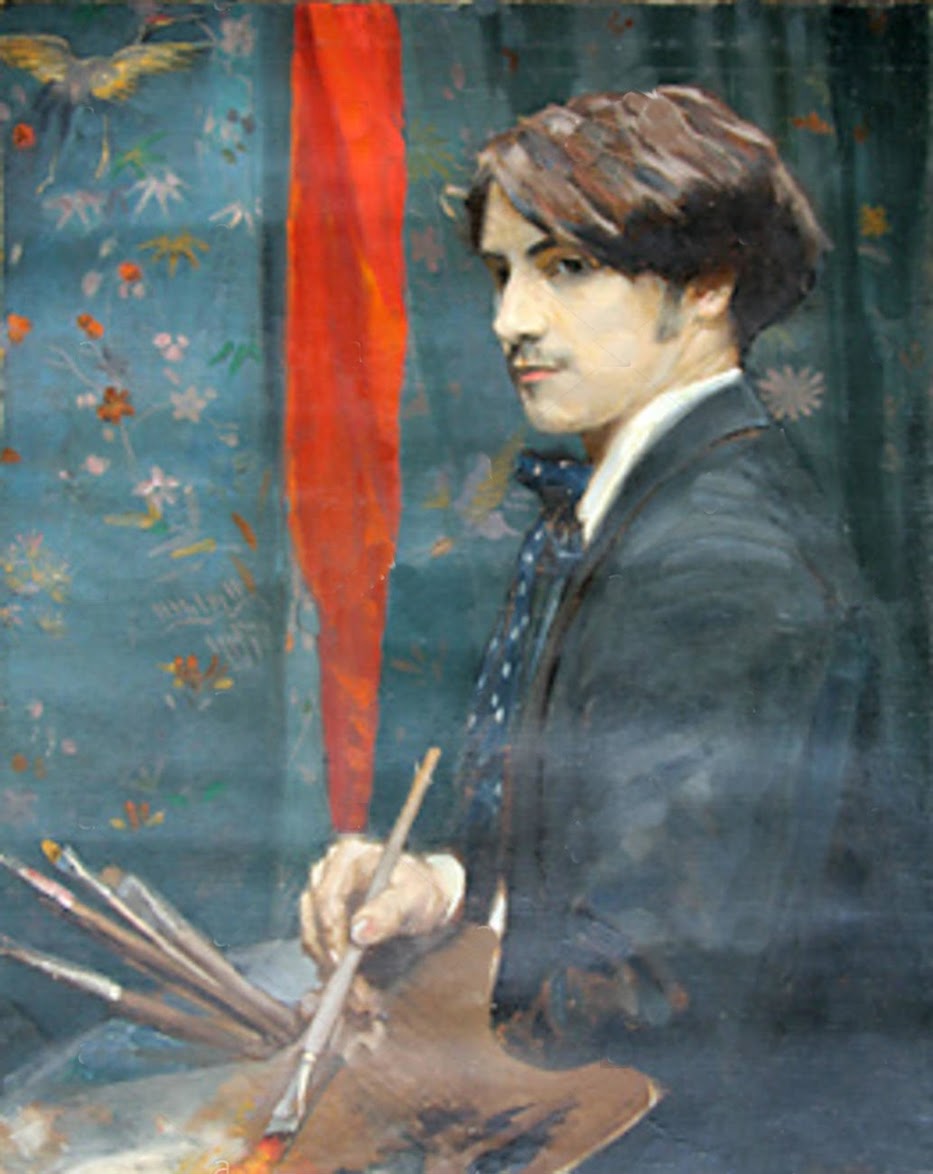
Adam Styka is a French orientalist painter of Polish origin.
Adam Styka, son of the painter Jan Styka, was educated at the French Academy of Fine Arts and, after serving in the French army, became a French citizen. As a result of his annual travels through the French colonies in North Africa, Adam developed an entire genre of Middle Eastern, Oriental and particularly Moroccan subjects. Styka had a talent for conveying the vivid colors and atmosphere of the hot Sahara desert, the moods and life of the people living there. After moving to the United States, Adam Styka began to paint landscapes of the American Wild West and paintings on religious subjects.
Styka often exhibited his paintings in the most prestigious Parisian galleries such as Salon de Paris, Champs Des Elysees and other galleries in Europe and both Americas, where he was always honored with the highest awards.
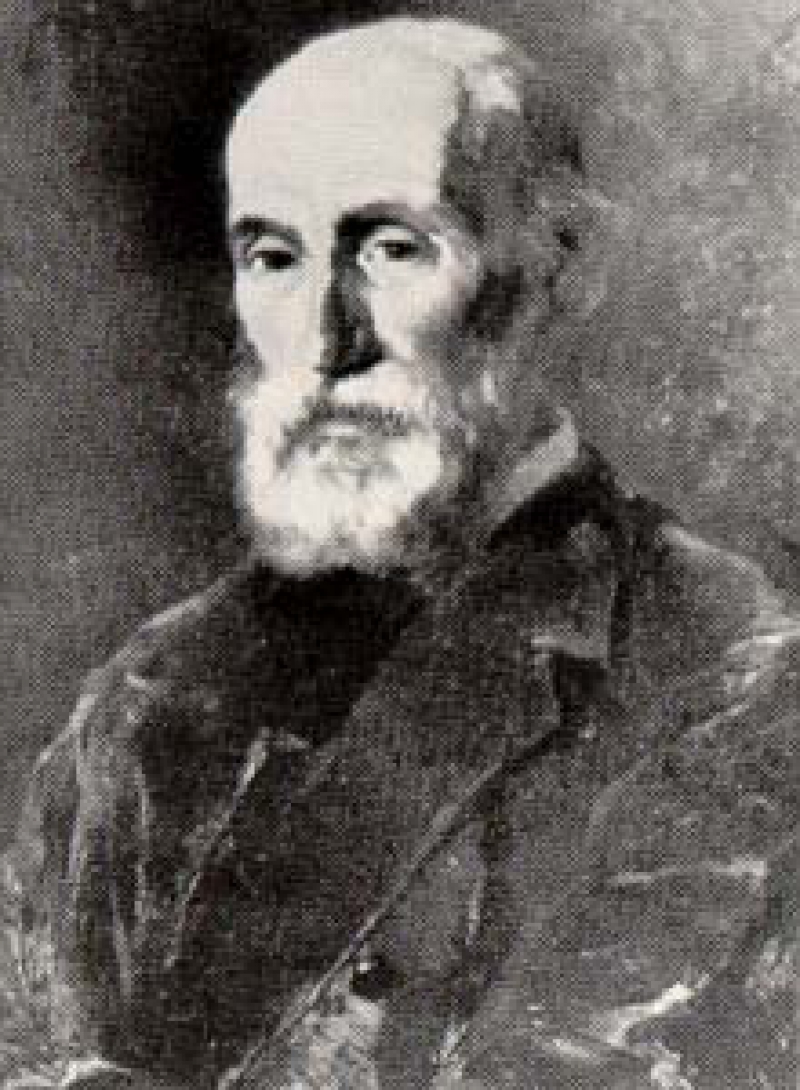
Christian Friedrich Mali was a German painter of the second half of the nineteenth and early twentieth centuries of Dutch origin. He is known as an animalist, landscape painter and genre painter of the Munich school.
Mali focused more on landscapes early in his career, favoring the landscapes of Garmisch-Partenkirchen and the Swabian Alps. After traveling to Italy, he pursued architectural painting. He later moved to Paris, where he became interested in animalistic painting, creating genre images depicting domestic animals.
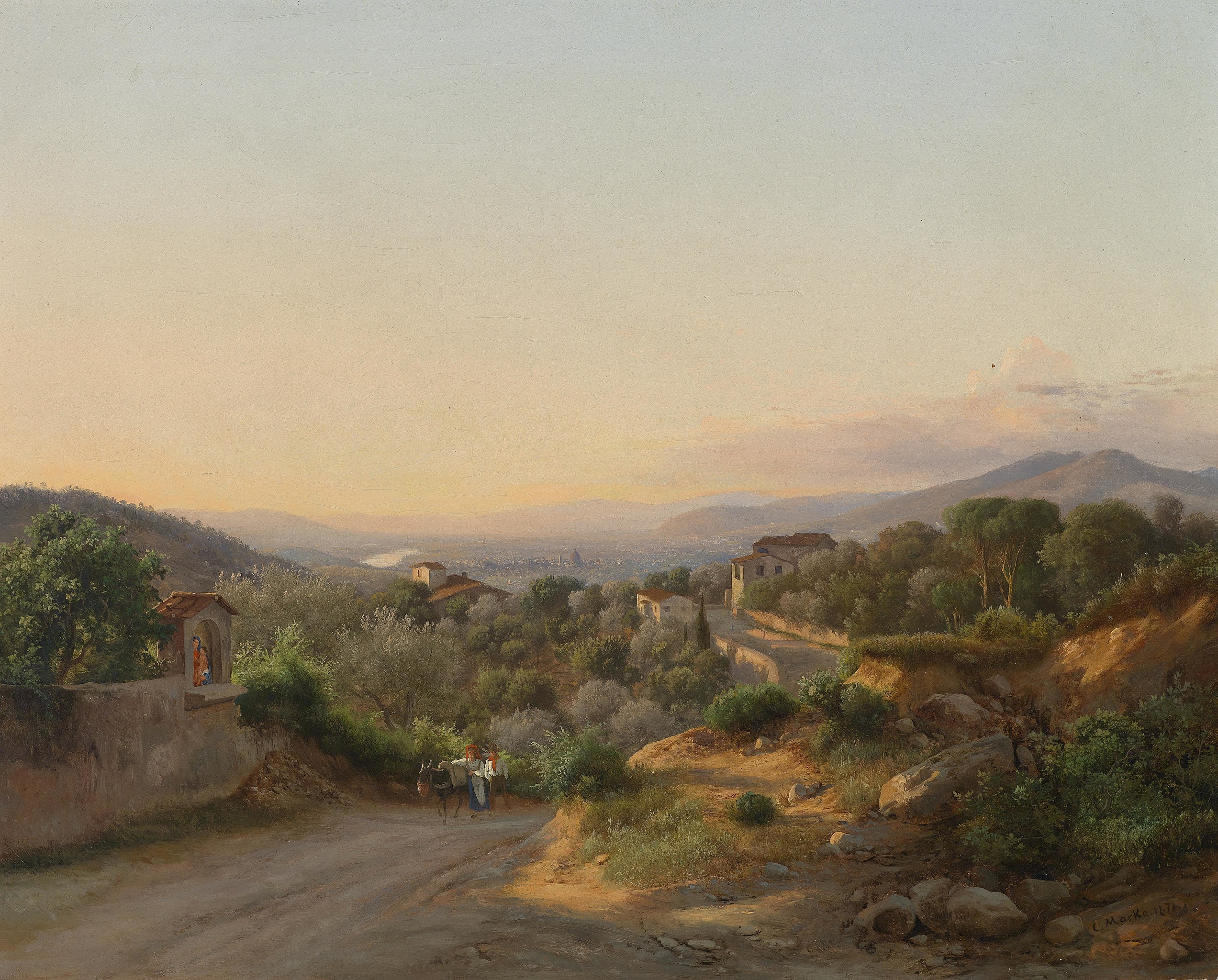
Károly Markó the Younger was a Hungarian-Italian landscape painter.
Károly Markó Jr. was a professor at the Academy of Fine Arts in Florence, as well as in Genoa, Perugia and Urbino.
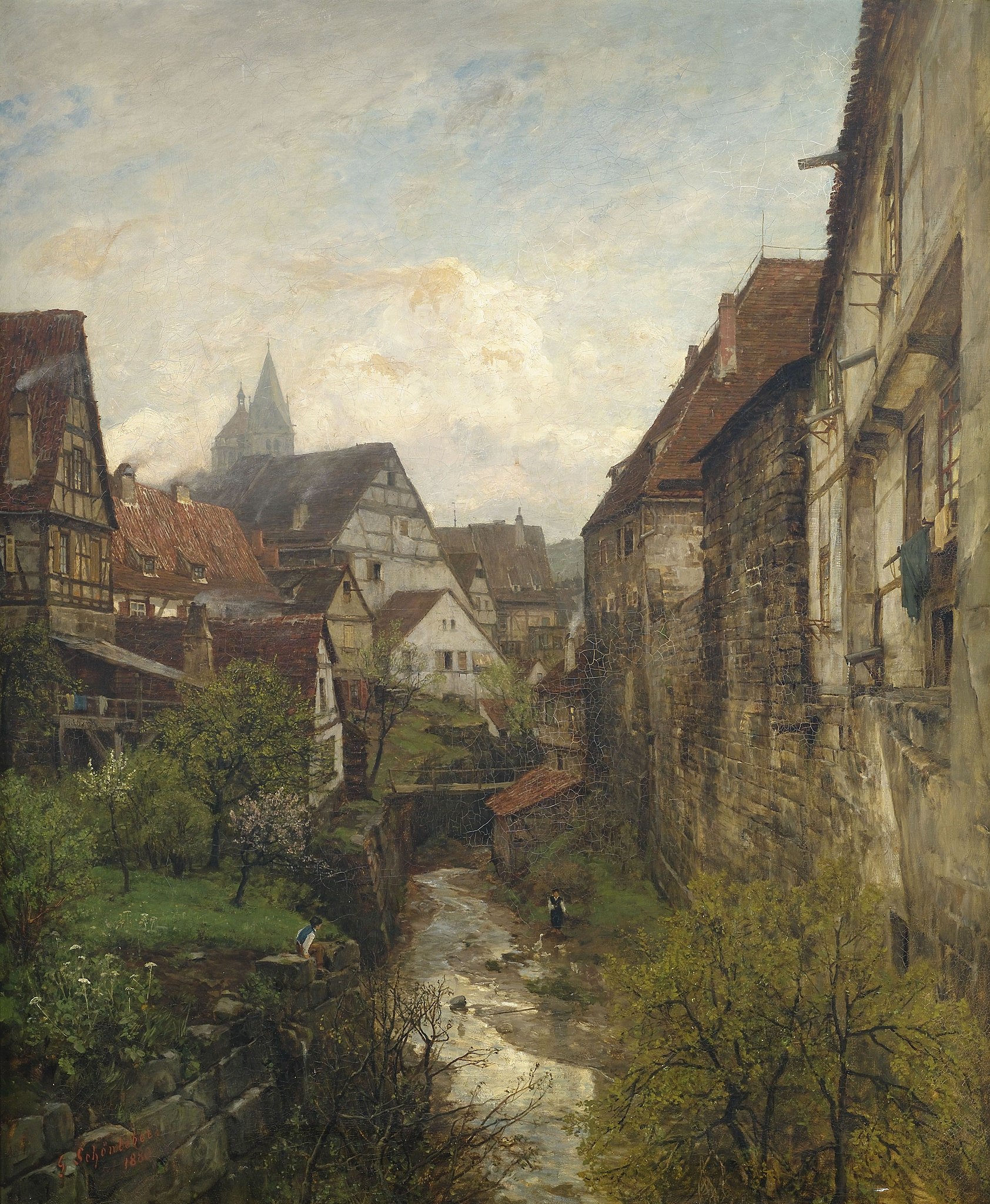
Gustav Schönleber was a German landscape painter.
From 1880 to 1917, he taught at the Academy of Fine Arts, Karlsruhe.
He also served on the committee that selected artists to design trading cards for the Stollwerck chocolate company of Cologne, and was a member of the Deutscher Künstlerbund. He was awarded the Pour le Mérite for Sciences and Arts in 1911 and, in 1912, received the Order of the Crown from King William II of Württemberg.
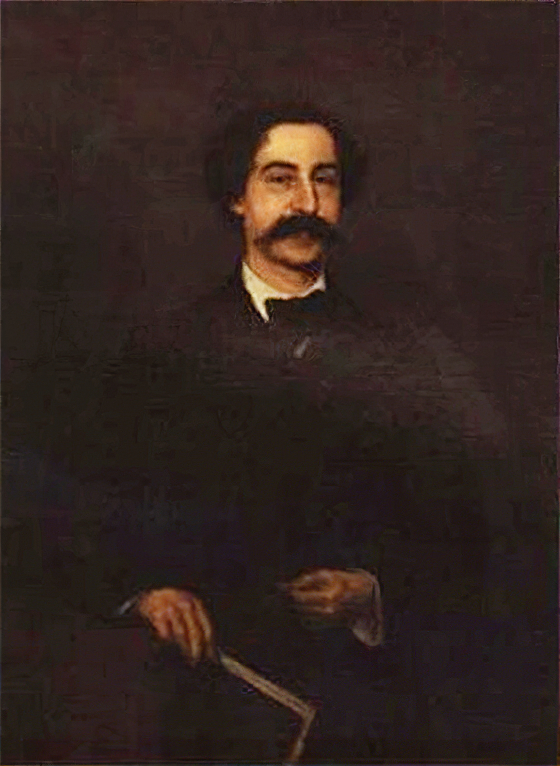
Jacques François Joseph Carabain was a Dutch-Belgian painter, known primarily for his scenes of cities and buildings in the Romantic-Realist style. He was especially interested in Medieval and Baroque structures, and was often attracted to busy market places.
